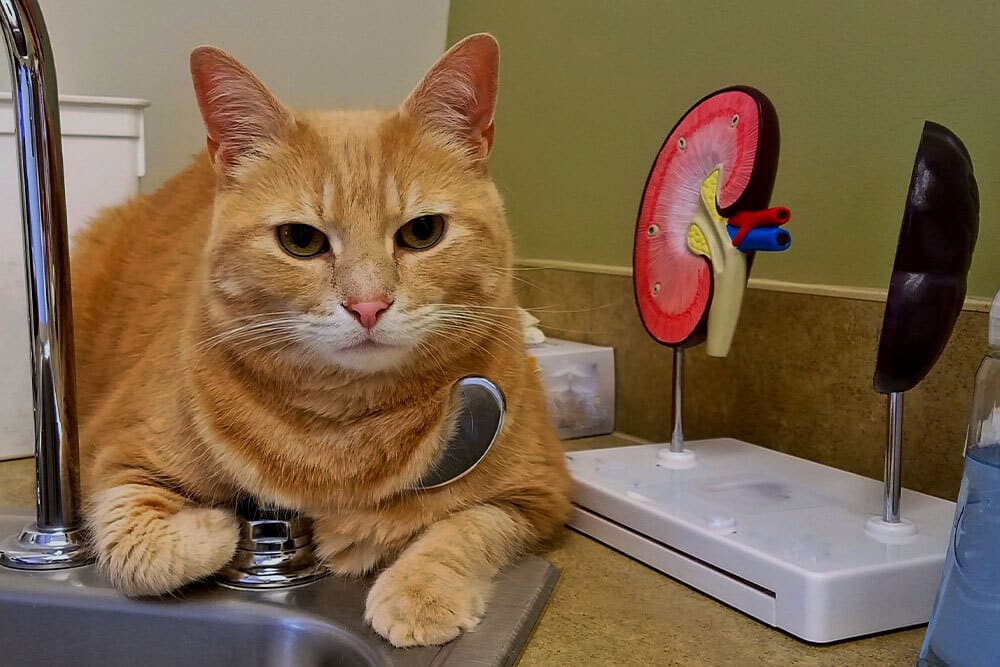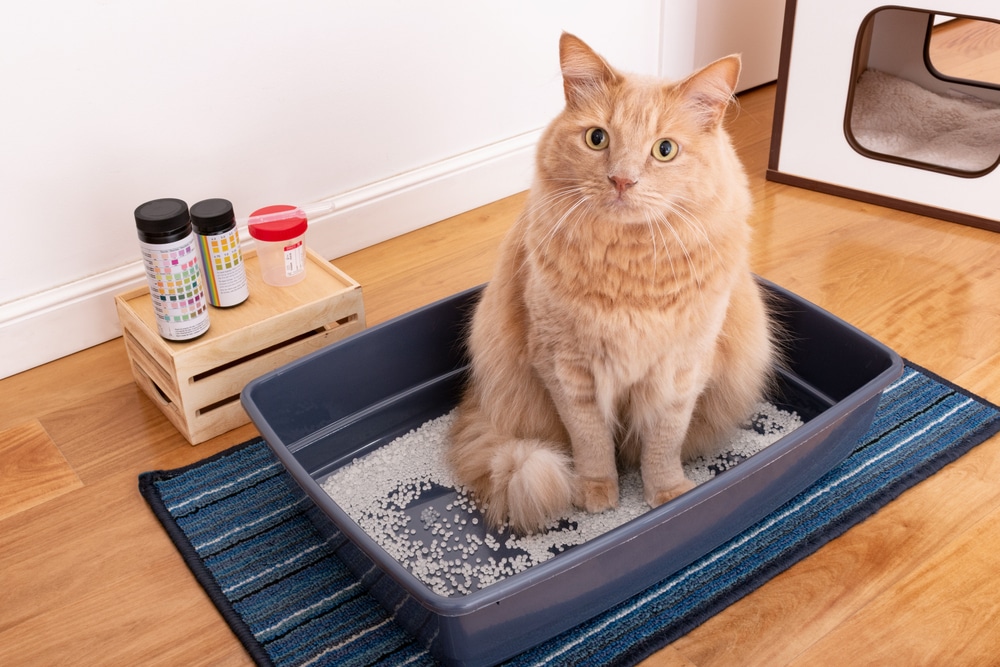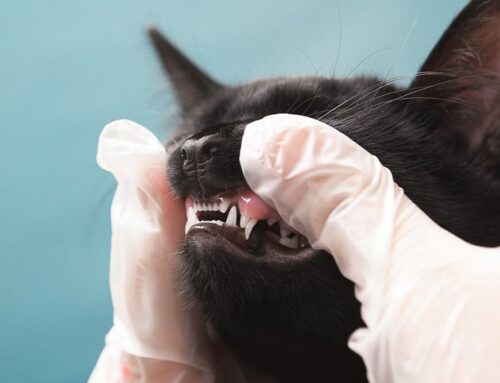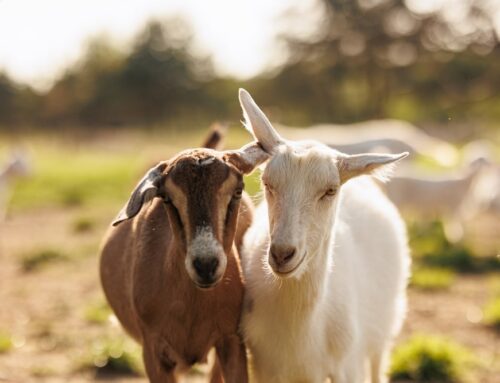Feline Kidney Disease: Subtle Signs You Shouldn’t Miss
Your cat is drinking from the water bowl more than usual. The litter box clumps look larger, and maybe their once-sleek coat seems a little dull. These quiet changes are easy to dismiss- but they can be the earliest signs of kidney disease, one of the most common health challenges in aging cats.
At Rustebakke Veterinary Service in Clarkston, WA, we help families recognize these early clues before they become emergencies. Through thorough testing, personalized care plans, and long-term management, we aim to keep your cat comfortable and thriving for as many years as possible.
Understanding Kidney Disease in Cats
How the Kidneys Work- and What Happens When They Don’t
The kidneys are remarkable filters that remove toxins, regulate hydration, and maintain healthy blood pressure. When they start to fail, waste builds up in the bloodstream, making cats feel weak, nauseated, and tired.
Chronic kidney disease (CKD) is the most common type and tends to progress slowly, often going unnoticed until nearly 70% of kidney function is gone. Cats over 10 are most at risk, though it can appear earlier- especially in breeds like Persians, Abyssinians, and Maine Coons, or cats with hyperthyroidism.
Acute kidney injury, by contrast, develops suddenly- often due to toxins, infections, or urinary blockages- and requires immediate intervention.
Why These Subtle Symptoms Matter
Increased Thirst and Urination
Failing kidneys lose their ability to concentrate urine, causing cats to urinate more and drink excessively to make up for it. You may find yourself refilling the bowl more often or scooping the litter box constantly.
Weight Loss and Decreased Appetite
As toxins accumulate in the bloodstream, they trigger nausea and suppress appetite. Even if your cat seems to eat “normally,” gradual weight loss often follows.
Vomiting and Bad Breath
Urea and other waste products irritate the stomach and digestive tract, leading to vomiting and a sour, ammonia-like smell on the breath. These are signs toxins are building up and the kidneys need support fast.
Dull or Unkempt Coat
Cats with kidney disease often stop grooming as they feel unwell. Dehydration can also dry out the skin, making fur greasy, patchy, or rough.
Lethargy or Weakness
Chronic kidney disease frequently leads to anemia in cats, since the kidneys stop producing hormones that trigger red blood cell production. Pale gums, tiredness, or decreased playfulness can all signal low oxygen levels.
Because these changes happen gradually, they’re often discovered during wellness exams or when families bring their cats in for “just not acting like themselves.”
How Rustebakke Veterinary Service Diagnoses and Manages Kidney Disease
Comprehensive Testing and Screening
Early detection is critical, and diagnostics provide the clearest picture of kidney health. At Rustebakke Veterinary Service, testing often includes:
- Blood chemistry panels– measure creatinine and blood urea nitrogen (BUN), which rise as kidney function declines
- Urinalysis– checks urine concentration and protein levels; dilute urine can signal early kidney trouble
- SDMA testing– detects kidney disease before traditional bloodwork changes
- Blood pressure monitoring– since hypertension both causes and results from kidney damage
- Imaging– X-rays or ultrasound to look for structural changes, cysts, or stones
Together, these tests allow for early detection- even before your cat shows obvious signs. Identifying problems early gives us the opportunity to slow progression, preserve comfort, and prepare for what comes next.
Staging, Monitoring, and Building a Long-Term Partnership
Once diagnosed, cats are classified using the IRIS kidney guidelines, which help determine how advanced the disease is and guide treatment. But just as important as the numbers on a lab report is the relationship between your family and your veterinary team.
Chronic kidney disease is a lifelong, progressive, and ultimately terminal condition. While many cats live comfortably for years after diagnosis, the disease will continue to advance over time. This means you’ll likely see your veterinarian more often- typically every three to six months- to track changes in lab work, hydration status, blood pressure, and appetite. These regular rechecks help your vet adjust treatment before small issues become crises.
Strong communication is essential. Your veterinarian becomes your partner and guide throughout every stage- helping you interpret results, manage symptoms, and make thoughtful, compassionate decisions as your cat’s needs evolve. Together, you’ll plan not only for treatment today, but also for the future, including how to recognize when quality of life begins to decline.
At Rustebakke Veterinary Service, our goal is to make sure you never feel alone in that process. We’ll discuss what to expect at each stage, prepare you for possible complications, and provide both medical and emotional support as you navigate this journey with your cat.
Treatment and Ongoing Management
Nutrition and Hydration
A therapeutic renal diet is the foundation of long-term care. These specialized foods lower protein and phosphorus to reduce kidney strain while providing essential nutrients and omega-3 fatty acids for overall health.
Hydration is equally important. Cats with kidney disease lose fluids rapidly through increased urination. We’re happy to teach you how to give subcutaneous fluids at home, which helps flush toxins and maintain comfort. Adding water to food or using cat fountains can also encourage drinking.
Medications and Supportive Therapies
Treatment focuses on maintaining stability and preventing complications:
- ACE inhibitors or ARBs– lower blood pressure and reduce protein loss in urine
- Phosphate binders– manage high phosphorus levels
- Potassium supplements– correct deficiencies common in CKD
- Anti-nausea or appetite medications– improve eating and comfort
- Erythropoietin-stimulating drugs– address anemia in advanced stages
Some cats may also need surgical care for complications such as urinary obstructions or to place feeding tubes during recovery periods.

Living Comfortably with Kidney Disease
Home Care and Environment
Cats with kidney disease do best in calm, predictable environments. Offer multiple water stations throughout the home, quiet rest areas, and litter boxes on every level for easy access.
Feed small, frequent, wet meals and keep a simple log of appetite, water intake, and activity- these details help your veterinarian fine-tune care during checkups.
When to Seek Urgent Care
Even well-managed cats can experience flare-ups that need quick attention. Contact our urgent pet care team right away if your cat:
- Stops eating or drinking for 24 hours
- Vomits repeatedly
- Appears weak, wobbly, or unresponsive
- Has pale gums or difficulty breathing
Swift treatment can prevent crisis-level dehydration, correct electrolyte imbalances, and restore comfort quickly.
Supporting Your Cat’s Health for the Long Term
Kidney disease can sound daunting, but early detection and consistent care truly make a difference. Many cats live happy, active lives for years after diagnosis with the right balance of medical management, monitoring, and love at home.
If you’ve noticed changes in your cat’s thirst, appetite, or behavior, schedule a visit today. Rustebakke Veterinary Service provides comprehensive diagnostics, medical management, and ongoing guidance to help your cat feel better- starting now.
Book Appointment or call (509) 758-0955 to discuss your concerns with our team. We’re here to support you and your cat every step of the way.









Leave A Comment